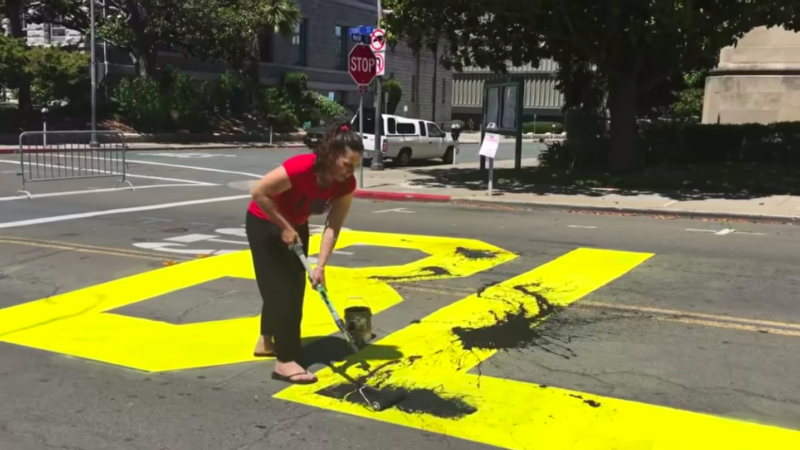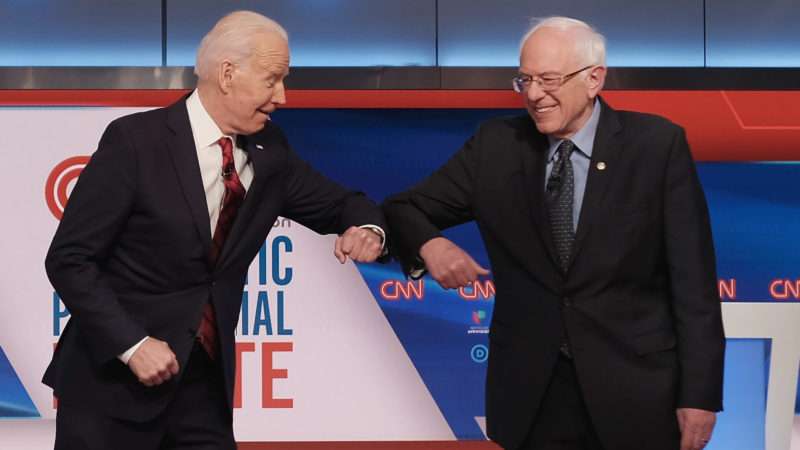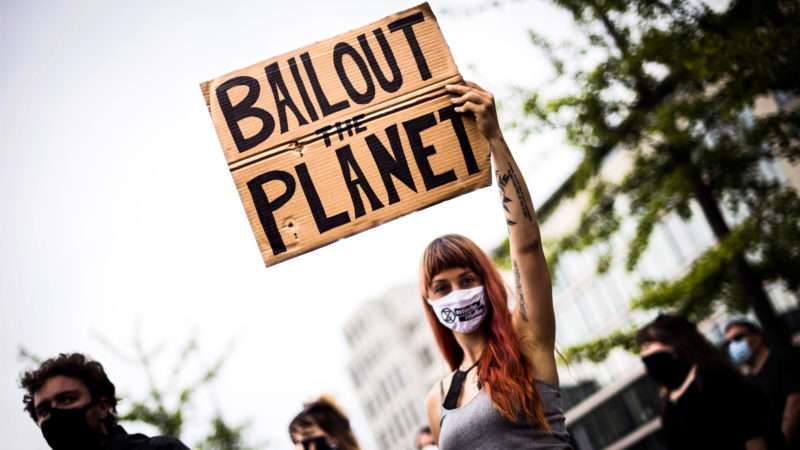
A man and a woman who attempted to paint over a city-approved Black Lives Matter mural in Martinez, California, on Saturday are both facing hate crime charges.
The Contra Costa County District Attorney’s Office charged Nicole Anderson and David Nelson with three misdemeanors: violation of civil rights, vandalism under $400, and possession of tools to commit vandalism or graffiti. If convicted, they each face up to a year in county jail.
In a viral video captured Saturday, Anderson is seen spattering black paint and using a roller to cover up a yellow Black Lives Matter sign that had been painted on the road facing the Martinez courthouse after the city issued a permit for the project. Nelson filmed.
“We’re sick of this narrative, that’s what’s wrong,” he says in the clip. “The narrative of police brutality, the narrative of oppression, the narrative of racism, it’s a lie.”
Contra Costa County District Attorney Diana Becton justified her decision to bring charges against the pair in a statement released this week. “We must address the root and byproduct of systemic racism in our country. The Black Lives Matter movement is an important civil rights cause that deserves all of our attention. The mural completed last weekend was a peaceful and powerful way to communicate the importance of Black lives in Contra Costa County and the country. We must continue to elevate discussions and actually listen to one another in an effort to heal our community and country.”
But central to the Black Lives Matter movement, according to their official statement of purpose, is the notion that many of the injustices they seek to rectify are especially egregious when they come from the state. The death of George Floyd has elevated the police reform debate, though that conversation has primarily centered around how difficult it is to hold rogue cops accountable. More, still, should be devoted to bad laws and regulations and the excessive penalties that are tied up in breaking those rules.
A cause that surrounds dismantling the carceral state—the U.S. government locks up its people at the highest rate by far—can not apply that ideology discriminately. Putting the vandals in a cage for a year over a nonviolent attempt to spread some paint won’t change their hearts and minds. And though it might change the police reform movement, it won’t be for the better.
Also of note is the district attorney’s decision to pursue hate crime charges for the paint-related incident, which carry enhanced penalties. That charge—violation of civil rights under California’s penal code 422—says that no person “shall knowingly deface, damage, or destroy the real or personal property of any other person” on the basis of protected class, including disability, gender, nationality, race or ethnicity, sexual orientation, and/or the association with a person who has one or more of those characteristics. Of note is that the property defaced here is not personal but is owned by the government—an important caveat when considering the road did not belong to the mural’s artists.
But at a broader level, there are plenty of reasons to take issue with pursuing hate crime charges. It sometimes means that people are charged twice for the same crimes. More important to this particular discussion is that it gives the government power to arbitrarily draw distinctions between hate-based infringements and those of a more agnostic variety, which chips away at the equality we’re all supposedly entitled to under law, the same equality BLM says it’s fighting for.
When considering the anti-carceral motivations behind the Black Lives Matter movement, the contradictions here are on full display. Seeking maximal state-imposed retribution for a nonviolent offense does nothing to help black people who no longer want to be the victims of maximal state-imposed retribution for nonviolent offenses.
The mural has since been repainted.
from Latest – Reason.com https://ift.tt/2W1hnV9
via IFTTT




